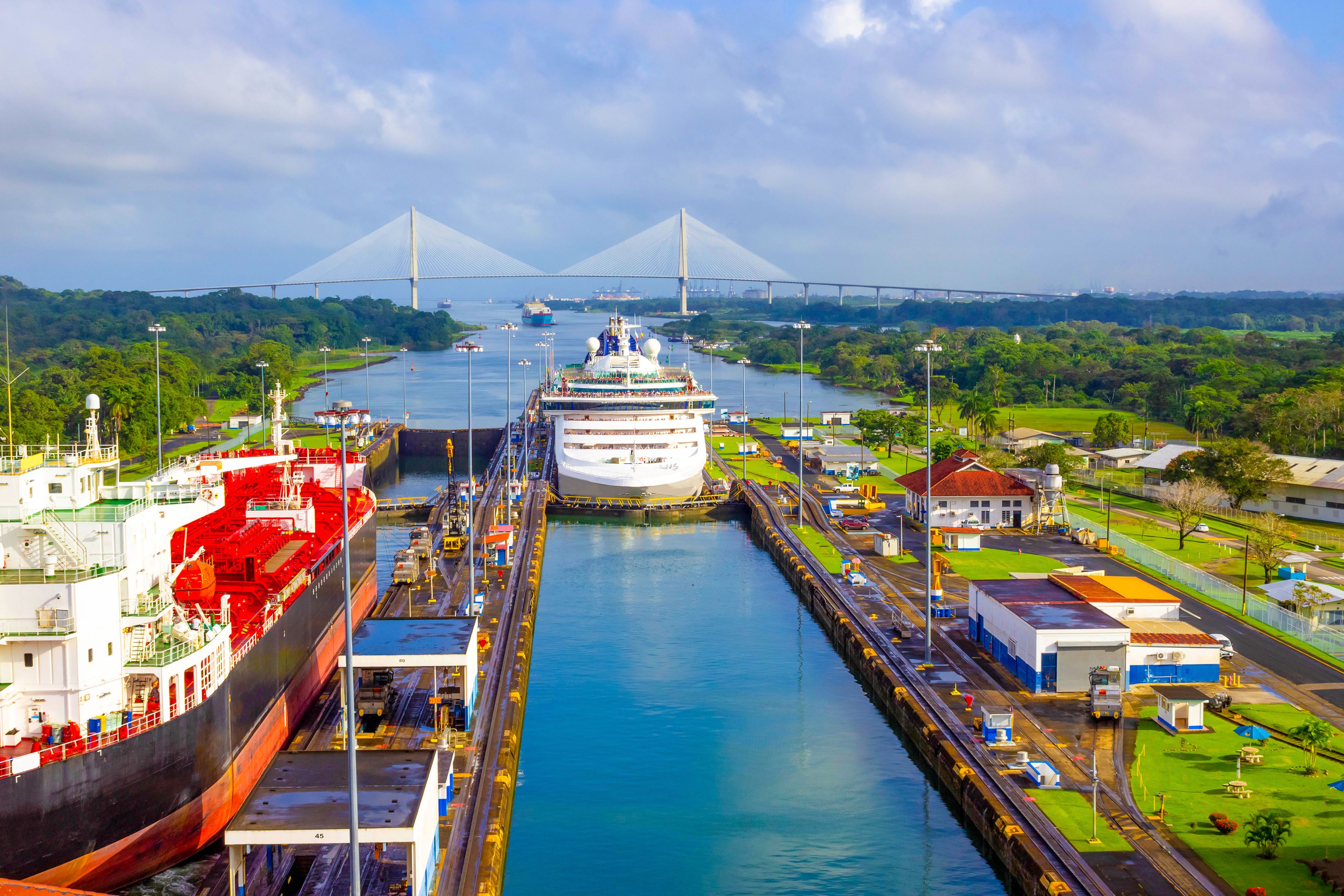
Vessels trying to pass through the Panama Canal are facing long delays and added costs, as authorities tackle “unprecedented” drought conditions caused by climate change.
In late July the Panama Canal Authority (PCA), which manages the Central American trade gateway, limited the number of vessels passing through the canal to 32, down from 36, and placed restrictions on the total tonnage that could be held on each ship.
The authority attributed this to an “extended dry season” that caused high levels of water evaporation, calling the environmental conditions “historically unprecedented”.
Importance
Vessels are now facing lengthy wait times before passing through the crucial canal, which is estimated to be a part of 180 maritime routes.
The Loadstar estimates that wait times to enter the canal have increased from two-to-three hours to as long as five days in some cases, with transit times also going up by several hours.
Matt Vick, Institute of Export & International Trade (IOE&IT) academy trade and customs expert explained that there were alternative routes for exporters, but these will add to transit times and costs:
“Generally these alternatives will add to transit times and costs.
“If the prospect of delays concerns you, get in touch with your freight forwarders or carriers and check what options you have available for you and your goods.”
Extensive bottlenecks remain although these appear to be clearing after the PCA relaxed booking rules to alleviate this congestion.
German group Hapag-Lloyd have announced surcharges on the route, according to the FT.
Rhine
Other critical trade routes are being threatened by climate-related droughts as global temperature records continue to tumble.
CNBC reports that the River Rhine, an important European trade route, is also experiencing severe droughts, with exporters in Germany and elsewhere facing additional costs. Last month, Hapag-Lloyd and Maersk said they would pass on surcharges to customers.
The River Rhine was closed to barge traffic last year, as reported by the IOE&IT Daily Update, following another seasonal drought caused by a lengthy European heatwave.
Food exports threatened
The Danube, the second longest river in Europe, has also been experiencing droughts.
Bloomberg reports that water levels in the Danube are nearly 40% lower than the average level in July because of high temperatures, although this remains higher than the record low level reached last year.
The Danube is one of the routes that is expected to be used for exporting grain from Ukraine’s ports after Russia pulled out of the Black Sea Grain Initiative. Delays caused by the drought could further impact the cost of living crisis across western Europe, including the UK.



